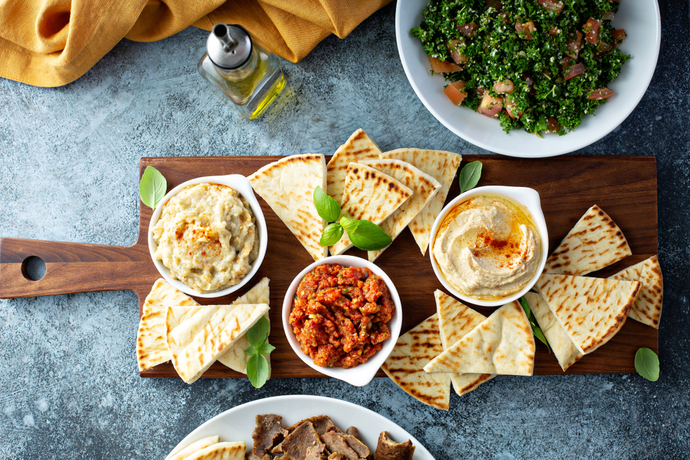
Make an easy transition to a Mediterranean style of eating with these simple steps.
If you’ve talked with your dietitian about adopting an anti-inflammatory, Mediterranean-style diet, but aren’t sure where to start—these simple tips can help you focus your new eating plan in the right direction.
- Top your bowl of cereal or yogurt with fresh fruit.
- Snack on homemade trail mix made with dried fruits, nuts, and seeds.
- Dip sliced raw veggies in hummus, tzatziki, or baba ghanoush.
- Sprinkle nuts or seeds on top of your salad; and dress it with a drizzle of extra virgin olive oil.
- Sneak chopped veggies to soups, chilis, and casseroles.
- Up your side dish game by adding slivered almonds to sautéed veggies.
- Add beans or peas into a brown rice dish.
- Skip butter and use olive oil instead—for cooking or dipping bread.
- Trade in steak night and opt for fatty fish, like salmon, trout, or sardines instead.
- Try meatless Mondays—create dishes around beans, which are low-fat sources of protein, fiber, and carbs.
- Upgrade white rice to brown rice, farro, or quinoa, and make it in batches so you have it on hand for quick and easy meals.
- Swap regular pasta and white bread for whole-wheat varieties.
- Experiment with cooking methods—try sautéing, steaming, simmering, and grilling.
- Trade in your salt shaker in favor of fresh or dried spices and herbs, like basil, nutmeg, oregano, parsley, and rosemary.
- Use citrus as a seasoning—add a fresh squeeze of lemon to your dishes.
- Keep dessert simple—small portions of fruit and cheese, dark chocolate with low- or non-fat dairy, sorbet, or gelato all make excellent choices.
- Wash it all down with a glass of red wine.
- Sit back, relax, and enjoy your meals with friends, family, and loved ones!
